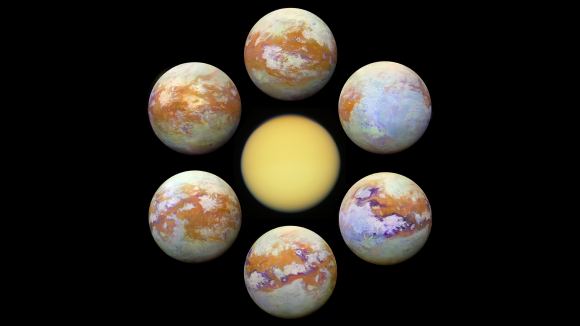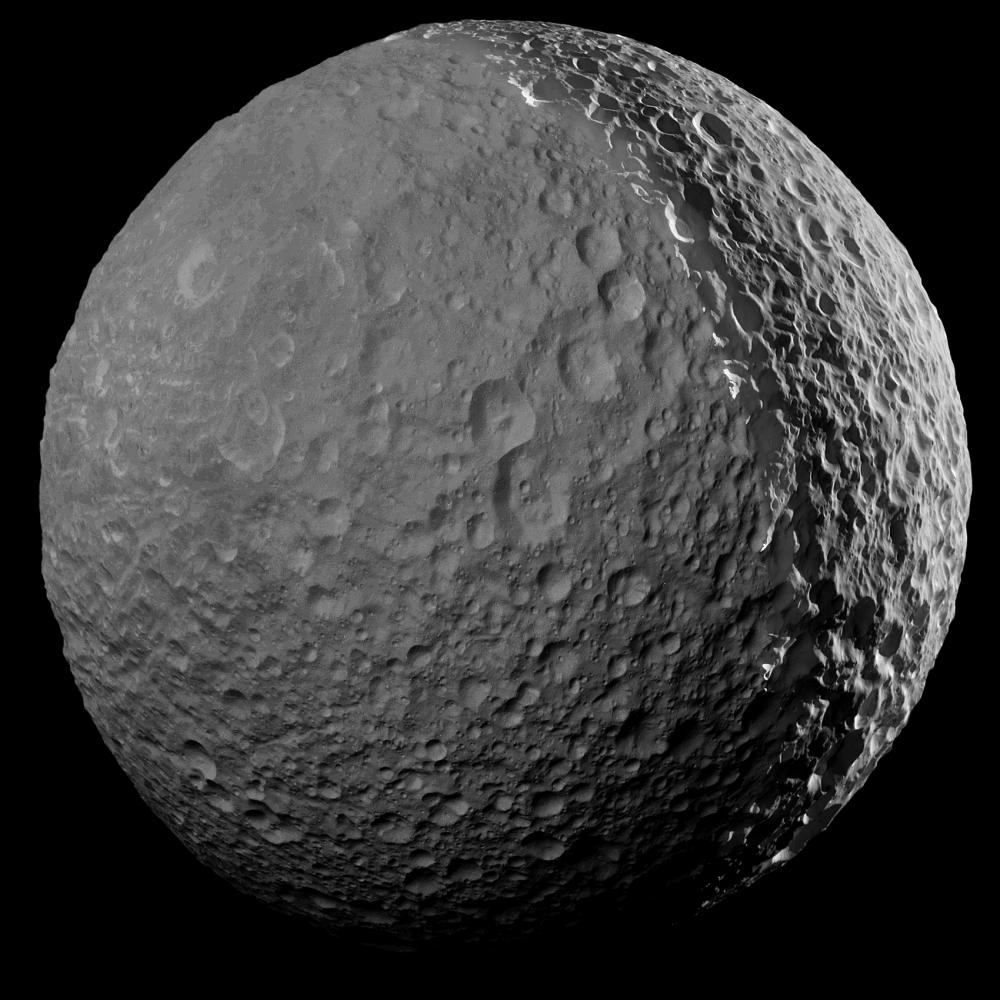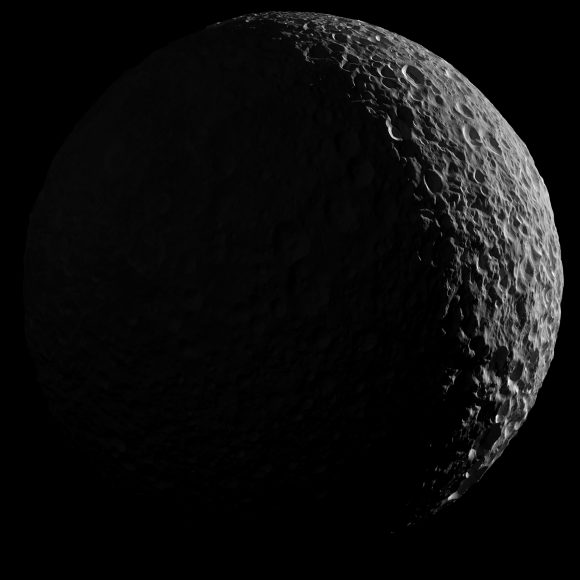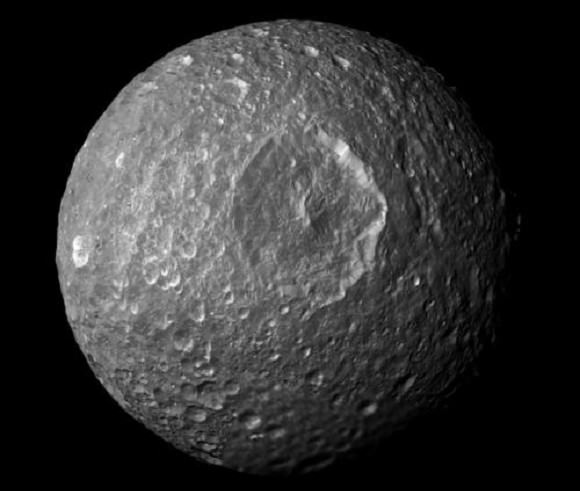The Cassini spacecraft ended its mission on September 15th, 2017, when it crashed into Saturn’s atmosphere, thus preventing any possible contamination of the system’s moons. Nevertheless, the wealth of data the probe collected during the thirteen years it spent orbiting Saturn (of the gas giant, its rings, and its many moons) continues to be analyzed by scientists – with amazing results!
Case in point, the Cassini team recently released a series of colorful images that show what Titan looks like in infrared. The images were constructing using 13 years of data that was accumulated by the spacecraft’s Visual and Infrared Mapping Spectrometer (VIMS) instrument. These images represent some of the clearest, most seamless-looking global views of the icy moon’s surface produced so far.
Infrared images provide a unique opportunity when studying Titan, which is difficult to observe in the visible spectrum because of its dense and hazy atmosphere. This is primarily the result of small particles called aerosols in Titan’s upper atmosphere, which strongly scatter visible light. However, where the scattering and absorption of light is much weaker, this allows for infrared “windows” that make it possible to catch glimpses of Titan’s surface.

It is because of this that the VIMS was so valuable, allowing scientists to provide clear images of Titan’s surface. This latest collection of images are especially unique because of the smoothness and clarity they offer. In previous infrared images captured by the Cassini spacecraft of Titan (see below), there were great variations in imaging resolution and lighting conditions, which resulted in obvious seams between different areas of the surface.
This is due to the fact that the VIMS obtained data over many different flybys with different observing geometries and atmospheric conditions. As a result, very prominent seams appear in mosaic images that are quite difficult to remove. But, through laborious and detailed analyses of the data, along with time consuming hand processing of the mosaics, Cassini’s imaging team was able to mostly remove the seams.
The process used to reduce the prominence of seams is known as the “band-ratio” technique. This process involves combining three color channels (red, green and blue), using a ratio between the brightness of Titan’s surface at two different wavelengths. The technique also emphasizes subtle spectral variations in the materials on Titan’s surface, as evidenced by the bright patches of brown, blue and purple (which may be evidence of different compositions).

In addition to offering the clearest and most-seamless glimpse of Titan yet, these unique images also highlight the moon’s complex geography and composition. They also showcase the power of the VIMS instrument, which has paved the way for future infrared instruments that could capture images of Titan at much higher resolution and reveal features that Cassini was not able to see.
In the coming years, NASA hopes to send additional missions to Titan to explore its surface and methane lakes for signs of biosignatures. An infrared instrument, which can see through Titan’s dense atmosphere, provide high-resolution images of the surface and help determine its composition, will prove very useful in this regard!
Further Reading: NASA




